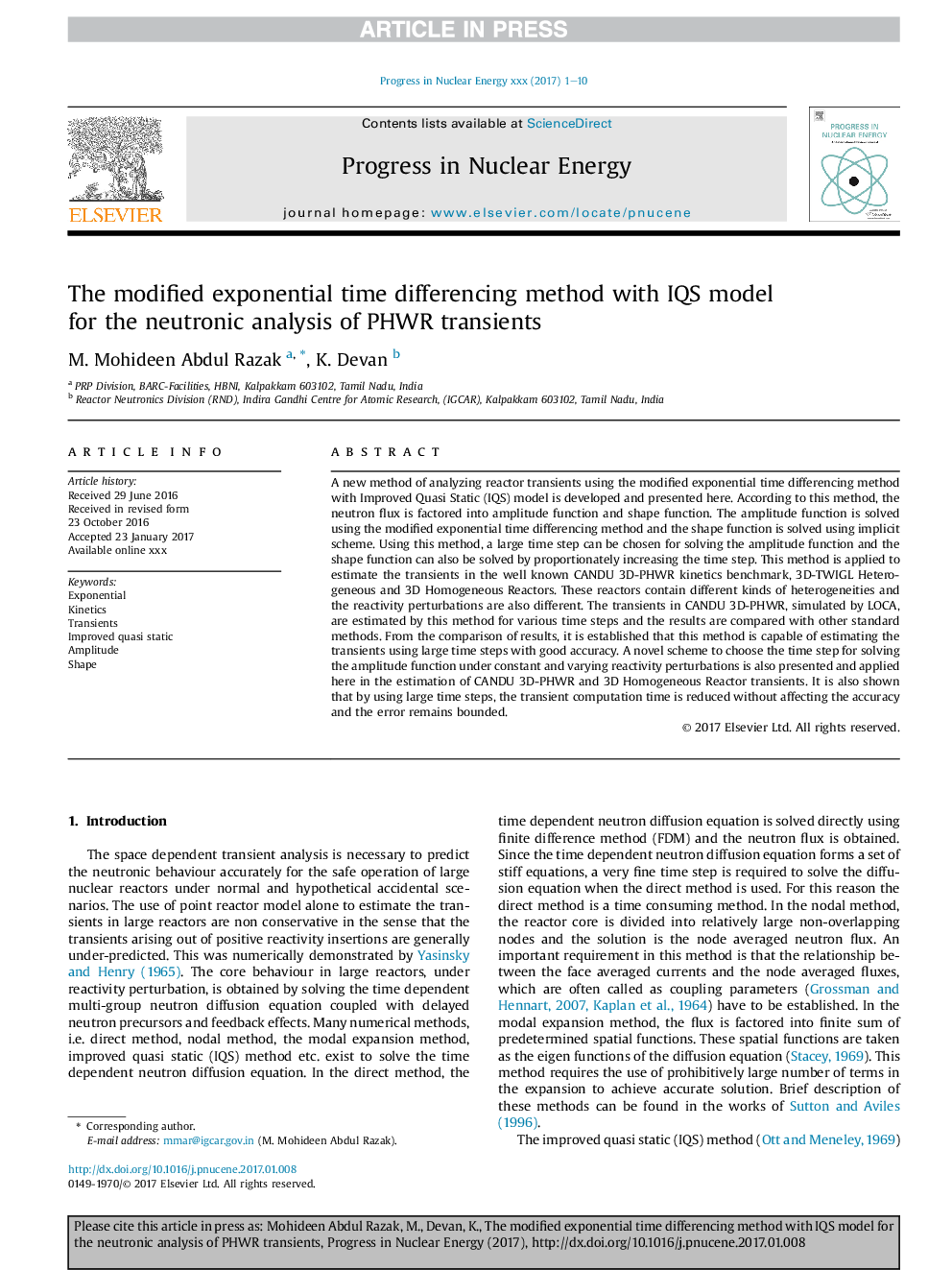| Article ID | Journal | Published Year | Pages | File Type |
|---|---|---|---|---|
| 5478041 | Progress in Nuclear Energy | 2017 | 10 Pages |
Abstract
A new method of analyzing reactor transients using the modified exponential time differencing method with Improved Quasi Static (IQS) model is developed and presented here. According to this method, the neutron flux is factored into amplitude function and shape function. The amplitude function is solved using the modified exponential time differencing method and the shape function is solved using implicit scheme. Using this method, a large time step can be chosen for solving the amplitude function and the shape function can also be solved by proportionately increasing the time step. This method is applied to estimate the transients in the well known CANDU 3D-PHWR kinetics benchmark, 3D-TWIGL Heterogeneous and 3D Homogeneous Reactors. These reactors contain different kinds of heterogeneities and the reactivity perturbations are also different. The transients in CANDU 3D-PHWR, simulated by LOCA, are estimated by this method for various time steps and the results are compared with other standard methods. From the comparison of results, it is established that this method is capable of estimating the transients using large time steps with good accuracy. A novel scheme to choose the time step for solving the amplitude function under constant and varying reactivity perturbations is also presented and applied here in the estimation of CANDU 3D-PHWR and 3D Homogeneous Reactor transients. It is also shown that by using large time steps, the transient computation time is reduced without affecting the accuracy and the error remains bounded.
Related Topics
Physical Sciences and Engineering
Energy
Energy Engineering and Power Technology
Authors
M. Mohideen Abdul Razak, K. Devan,
